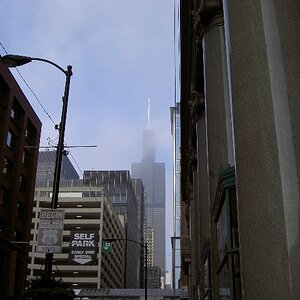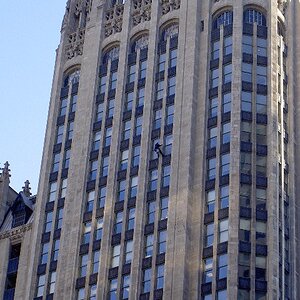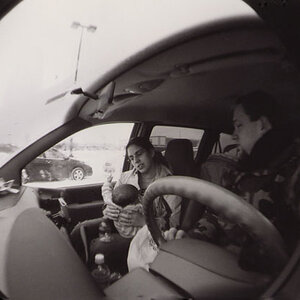jbarrettash
TPF Noob!
- Joined
- Dec 2, 2012
- Messages
- 67
- Reaction score
- 9
- Location
- montreal, QC
- Can others edit my Photos
- Photos OK to edit
I hope this is the right place for this - if not feel free to move it. 
This post is largely in response to this thread: http://www.thephotoforum.com/forum/...page-before-being-able-view-photo-albums.html , but the original thread got derailed in so many different directions I thought I would pick up one of the main ideas that surfaced in a thread of its own. I am pretty new here, though not new to forums nor photography, so I know to fully expect to be flamed for this post.
The notion of under and overexposure is always a hot topic among photographers. What is underexposed and overexposed? Is there really a consensus on it? Some of Yousuf Karsh's more famous portraits would be considered flat and underexposed by many, whereas the trend for "overexposure" to hide imperfections in glamour photography has reached new highs in the last decade or two. I am a hobbyist photographer with 25 yrs experience and a professional cinematographer and quite a while ago i devised a useful system for myself that may strike a chord with some of you - or enrage others. For those less technically oriented, skip the next few paragraphs if you like and head straight for the STORY below.
For those less technically oriented, skip the next few paragraphs if you like and head straight for the STORY below.
First, let me address "proper" exposure in film terms: a film stock can be said to be "properly" exposed when at a given ASA (ISO) a photographed 18% grey card will print/be projected to 18% refelection/transmisson and preserve its native characteristic curve (a graph of its tonal response from knee to toe). The "given" ASA (ISO) is defaulted to the manufacturer's rating, but by testing a stock at different ASA (ISO), different characteristic curves emerge: softer or more contrasty, if the print is printed "up" or "down" to preserve the 18% on the card.
It is, IMHO, entirely up to the photographer where to place this ASA(ISO) rating, according to what they wish to accomplish with the images. A stock using the manufacturer's rating is "safe" and will always produce the same results under the same conditions, maximizing the ability of the particular stock to capture as many stops of latitude as possible (though in practice this is rarely true...). I call this class of image "Kodak perfect".
And many consider that this approach to exposure is to what all "good" photography aspires, or should aspire. BUT, it is, for me, simply a recommendation at best, and a point of departure most of the time. Often I will want to slide down the curve a little, or climb a jump up to achieve a look. This is not new: it's basically a looser approach to Ansel Adam's Zone system. Anyone who thinks Mr. Adams defined his system simply to stick with manufacturer's ratings and expose "Kodak Perfect" images needs to reread his books - notably the chapters on "Visualization" - and look at some of his softer darker images that would, by "Kodak Perfect" standards be considered "underexposed".
And once you start down this slippery slope , true creative freedom starts: use a stock to create a softer image by establishing your own lower EI (ASA (ISO)), then expose some images a couple of stops down the scale into what most would call "underexposure". Sometimes, amazing images are produced this way.
, true creative freedom starts: use a stock to create a softer image by establishing your own lower EI (ASA (ISO)), then expose some images a couple of stops down the scale into what most would call "underexposure". Sometimes, amazing images are produced this way.
Now for terms: i think it is up to the photographer to decide what is to be termed under- or overexposed, for the photographer is the one who decides the initial exposure. If it is accidentally dark or simply darker than aimed for, for whatever reason, then the photographer may admit a mistake and say he "underexposed" the image by technical error or lack of experience or understanding of the photographic process.
I prefer the terms over and underrated for purposefully bright or darker images respectively, because they are useful terms for understanding intent. And, as noted above, I reserve the terms under and overexposure for unintentional error or a failed execution of a final pre-"visualised" image.
Now for the STORY:
A few years back I was the cinematographer on a forty minute dramatic film. I spoke with the director about a look for his slow moving, pensive film and I thought i had a good idea of what he wanted. We tested about a half dozen filmstocks - several kodak and several fuji as well. I am a big fan of the kodak stocks for their ruggedness AND their flexibility, but it came as a surprise that my visualisation was much more successful on one particular fuji stock. The stock in question, for the test, was under-rated by 2.5 stops and printed up 1 stop (so the images finally printed were, according to maufacturer's rating, "underexposed" by 1.5 stops.) It was beautiful - painterly if not quite pastel, with an agreeable noise/grain across the image (and yes, I am one of those that think graininess is an effective creative tool). The director loved it too, so we shot the whole film that way and the producers and the crew loved the dailies and congratulated me on some great, unique work. I was ecstatic - nothing like nailing it, right?
Then I went back to New York where I had been living for a couple of years. The director scheduled the grading (like photo editing) on a day i could not make it back to Montreal, so i sent him some notes and had a phone call with the colour timer/grader. She seemed on board with what I had in mind. A few days went by and the director called me, half way between rage and tears - "they ruined my film, our film!" he scream-sobbed over the phone. Apparently, despite my discussion, the colour timer decided to ignore my wishes and time the film up and add contrast so that it looked good on her vectorscope and to her "kodak perfect" sensibilities. Gone was the soft patina and any interest the images had for the film we tried to make. She even cleaned up the minimal noise she found offensive, so all our work and testing were thrown out the window.
I gave him the name of the owner of the post production facility and told him to call him, tell him the timer refused to heed his wishes and to book a new session with a new colour timer on a day I could be there. We went back in, timed the film the way we wanted (35mm print and video copies) and left with a smile on our faces. The next day, when the director returned to pay, they would not let the material go without his signing a piece of paper absolving them of responsibility for their work! They claimed the film, timed the way it was as per our look and our specifications, was below the norm and was undistributable...
The film went on to many accolades and won the highest prize in quebec that year for a short, as well as garnering a few cinematography awards and very favourable mentions in reviews. And was distributed on rotation for the better part of a year by one of the top Quebecois cable channels!
The point of the story? Sometimes you just have to saw against the grain the get the wood the way you want it. In photography and cinematography, there are people who revere one type of image above all else (in this day and age, generally very crisp, contrasty, noiseless ones that look good on histograms and vectorscopes). I am not saying these images are bad - on the contrary, they can be great but are nevertheless only one flavour among many, and to limit oneself thus is, well, limiting.
While most of this discussion has centered around film and film terms, the same ideas can just as readily be applied to digital cinematography and photography.
Incidentally, the photos linked to on faceBook in the link above could definitely be improved upon, but as far as I am concerned if the photographer says that the look he achieved was intentional, then it is fairly out of line to tell him they are "underexposed". Ineffective the way they are exposed is perhaps a valid criticism, but even better than that is to simply say they don't touch or do anything for you personally. Telling him he doesn't know how to use a flash after he has written he used one and darkened them in editing deliberately is also insulting. You may not like his images, but the bottom line is there was intent behind them and a look satisfying to the photographer's pre-visualization was achieved - so the rest, like it or not, is personal taste. I do realize it was in a business subforum, so perhaps the criticism was geared to helping him create more salable images, but very few of the posts seemed to address this. And, more pertinently, his question had absolutely nothing of an invitation to criticize his images or technique.
Well, that's my rant... any thoughts? flames?
Cheers,
Jbarrrettash
This post is largely in response to this thread: http://www.thephotoforum.com/forum/...page-before-being-able-view-photo-albums.html , but the original thread got derailed in so many different directions I thought I would pick up one of the main ideas that surfaced in a thread of its own. I am pretty new here, though not new to forums nor photography, so I know to fully expect to be flamed for this post.
The notion of under and overexposure is always a hot topic among photographers. What is underexposed and overexposed? Is there really a consensus on it? Some of Yousuf Karsh's more famous portraits would be considered flat and underexposed by many, whereas the trend for "overexposure" to hide imperfections in glamour photography has reached new highs in the last decade or two. I am a hobbyist photographer with 25 yrs experience and a professional cinematographer and quite a while ago i devised a useful system for myself that may strike a chord with some of you - or enrage others.
First, let me address "proper" exposure in film terms: a film stock can be said to be "properly" exposed when at a given ASA (ISO) a photographed 18% grey card will print/be projected to 18% refelection/transmisson and preserve its native characteristic curve (a graph of its tonal response from knee to toe). The "given" ASA (ISO) is defaulted to the manufacturer's rating, but by testing a stock at different ASA (ISO), different characteristic curves emerge: softer or more contrasty, if the print is printed "up" or "down" to preserve the 18% on the card.
It is, IMHO, entirely up to the photographer where to place this ASA(ISO) rating, according to what they wish to accomplish with the images. A stock using the manufacturer's rating is "safe" and will always produce the same results under the same conditions, maximizing the ability of the particular stock to capture as many stops of latitude as possible (though in practice this is rarely true...). I call this class of image "Kodak perfect".
And many consider that this approach to exposure is to what all "good" photography aspires, or should aspire. BUT, it is, for me, simply a recommendation at best, and a point of departure most of the time. Often I will want to slide down the curve a little, or climb a jump up to achieve a look. This is not new: it's basically a looser approach to Ansel Adam's Zone system. Anyone who thinks Mr. Adams defined his system simply to stick with manufacturer's ratings and expose "Kodak Perfect" images needs to reread his books - notably the chapters on "Visualization" - and look at some of his softer darker images that would, by "Kodak Perfect" standards be considered "underexposed".
And once you start down this slippery slope
Now for terms: i think it is up to the photographer to decide what is to be termed under- or overexposed, for the photographer is the one who decides the initial exposure. If it is accidentally dark or simply darker than aimed for, for whatever reason, then the photographer may admit a mistake and say he "underexposed" the image by technical error or lack of experience or understanding of the photographic process.
I prefer the terms over and underrated for purposefully bright or darker images respectively, because they are useful terms for understanding intent. And, as noted above, I reserve the terms under and overexposure for unintentional error or a failed execution of a final pre-"visualised" image.
Now for the STORY:
A few years back I was the cinematographer on a forty minute dramatic film. I spoke with the director about a look for his slow moving, pensive film and I thought i had a good idea of what he wanted. We tested about a half dozen filmstocks - several kodak and several fuji as well. I am a big fan of the kodak stocks for their ruggedness AND their flexibility, but it came as a surprise that my visualisation was much more successful on one particular fuji stock. The stock in question, for the test, was under-rated by 2.5 stops and printed up 1 stop (so the images finally printed were, according to maufacturer's rating, "underexposed" by 1.5 stops.) It was beautiful - painterly if not quite pastel, with an agreeable noise/grain across the image (and yes, I am one of those that think graininess is an effective creative tool). The director loved it too, so we shot the whole film that way and the producers and the crew loved the dailies and congratulated me on some great, unique work. I was ecstatic - nothing like nailing it, right?
Then I went back to New York where I had been living for a couple of years. The director scheduled the grading (like photo editing) on a day i could not make it back to Montreal, so i sent him some notes and had a phone call with the colour timer/grader. She seemed on board with what I had in mind. A few days went by and the director called me, half way between rage and tears - "they ruined my film, our film!" he scream-sobbed over the phone. Apparently, despite my discussion, the colour timer decided to ignore my wishes and time the film up and add contrast so that it looked good on her vectorscope and to her "kodak perfect" sensibilities. Gone was the soft patina and any interest the images had for the film we tried to make. She even cleaned up the minimal noise she found offensive, so all our work and testing were thrown out the window.
I gave him the name of the owner of the post production facility and told him to call him, tell him the timer refused to heed his wishes and to book a new session with a new colour timer on a day I could be there. We went back in, timed the film the way we wanted (35mm print and video copies) and left with a smile on our faces. The next day, when the director returned to pay, they would not let the material go without his signing a piece of paper absolving them of responsibility for their work! They claimed the film, timed the way it was as per our look and our specifications, was below the norm and was undistributable...
The film went on to many accolades and won the highest prize in quebec that year for a short, as well as garnering a few cinematography awards and very favourable mentions in reviews. And was distributed on rotation for the better part of a year by one of the top Quebecois cable channels!
The point of the story? Sometimes you just have to saw against the grain the get the wood the way you want it. In photography and cinematography, there are people who revere one type of image above all else (in this day and age, generally very crisp, contrasty, noiseless ones that look good on histograms and vectorscopes). I am not saying these images are bad - on the contrary, they can be great but are nevertheless only one flavour among many, and to limit oneself thus is, well, limiting.
While most of this discussion has centered around film and film terms, the same ideas can just as readily be applied to digital cinematography and photography.
Incidentally, the photos linked to on faceBook in the link above could definitely be improved upon, but as far as I am concerned if the photographer says that the look he achieved was intentional, then it is fairly out of line to tell him they are "underexposed". Ineffective the way they are exposed is perhaps a valid criticism, but even better than that is to simply say they don't touch or do anything for you personally. Telling him he doesn't know how to use a flash after he has written he used one and darkened them in editing deliberately is also insulting. You may not like his images, but the bottom line is there was intent behind them and a look satisfying to the photographer's pre-visualization was achieved - so the rest, like it or not, is personal taste. I do realize it was in a business subforum, so perhaps the criticism was geared to helping him create more salable images, but very few of the posts seemed to address this. And, more pertinently, his question had absolutely nothing of an invitation to criticize his images or technique.
Well, that's my rant... any thoughts? flames?
Cheers,
Jbarrrettash
Last edited:


![[No title]](/data/xfmg/thumbnail/35/35262-02f8eba4a2a92dbae0b55547bba80b4f.jpg?1619736968)
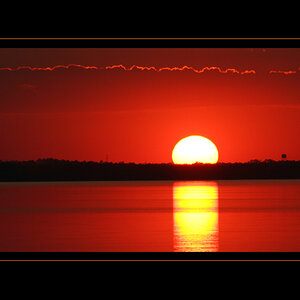
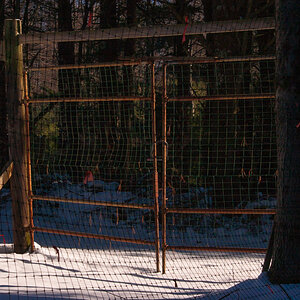
![[No title]](/data/xfmg/thumbnail/35/35263-86f580cf5d28d23109a45984030a79ad.jpg?1619736968)
![[No title]](/data/xfmg/thumbnail/35/35264-5ade32b7036391926536661aeb7491c3.jpg?1619736969)
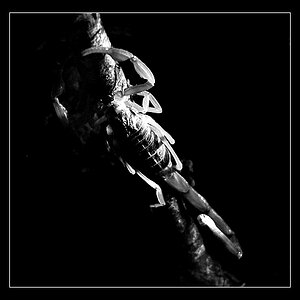
![[No title]](/data/xfmg/thumbnail/39/39469-3f2d242112dec8dc3e7b2836cc85afec.jpg?1619739042)
